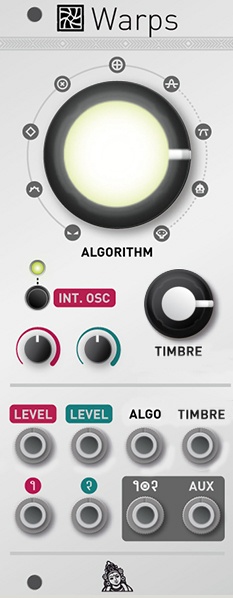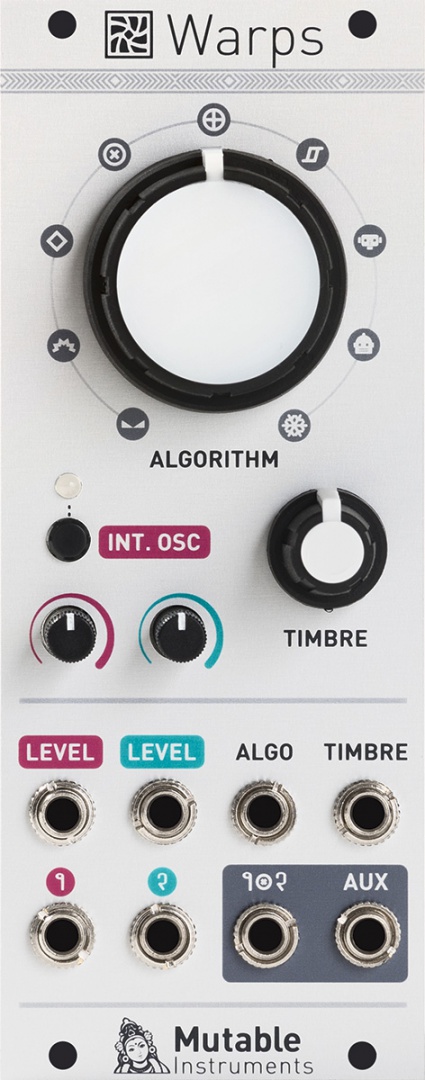bartleby
lieber nicht.
es nimmt kein ende.
erste praesentation eines fruehen prototypen bei modular square:
aeusserungen von olivier auf facebook (zitiert nach nutzer BennelongBicyclist im m.i.-forum):
erste praesentation eines fruehen prototypen bei modular square:
aeusserungen von olivier auf facebook (zitiert nach nutzer BennelongBicyclist im m.i.-forum):
Mutable Instruments> Warps, upcoming (june/july) modulation/hybridization/vocoding 10-HP module. 2 audio inputs with distorting VCA, CV-able morphing between 9 flavors of modulation algorithms, CV-able multi-function timbre control, built-in sine/saw/glottal pulse/noise oscillator with V/Oct tracking.
Igor Kopko> so what I/O it has, if you don’t mind me asking? (except 2x audio in and morph/timbre cv)
Mutable Instruments> channel 1 gain/distortion CV, channel 2 gain/distortion CV, modulation type CV, timbre CV. Carrier input, modulator input. Modulation output, internal oscillator output.
Igor Kopko> Great, can’t see however what of this would be 1v/oct of internal osc? And manual control too, seeing only a few knobs.
Mutable Instruments> When you enable the internal osc, it repurposes the carrier inputs (audio and gain CV). Carrier audio input -> AC coupled linear FM for internal osc ; Carrier VCA gain -> DC coupled expo FM for internal osc, with V/oct tracking.
Igor Kopko> Then again, the last question: if you don’t enable the internal osc, what’s going on on the int.osc output?
Mutable Instruments? For now you have the sum of carrier and modulator, post VCA. I’ll probably find something more interesting to do.
Mario Bass> “9 flavors of modulation algorithms “ what are those flavors/algortihms for audio-inputs?
Mutable Instruments> crossfading, crossfolding, analog ringmod emulation, digital ringmod, logical bit manipulations, comparator based modulations, and 3 flavors of spectral hybridization including vocoding.
EVERYTHING STILL SUBJECT TO CHANGES.






